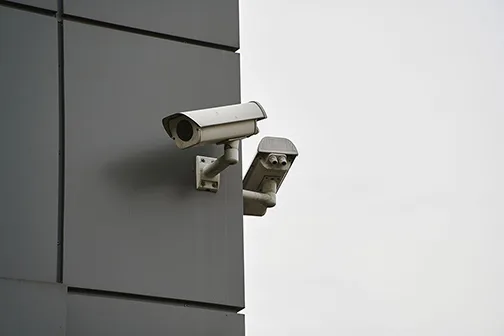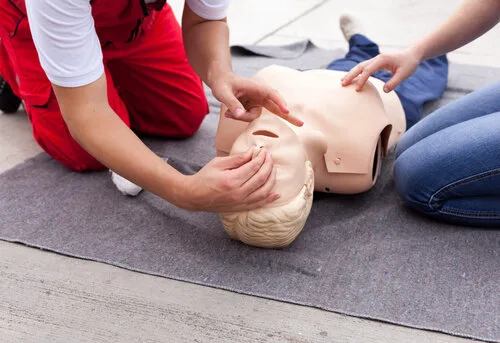Automated external defibrillators (AEDs) have increasingly become a critical component of workplace and public space safety, particularly in environments where cardiac emergencies are possible. The Provision and Use of Work Equipment Regulations 1998 (PUWER) establishes essential guidelines for employers wishing to introduce AEDs into the workplace and the legal implications surrounding their use. This essay will explore the regulations surrounding AEDs, the legal responsibilities of employers and employees, and the protection afforded to individuals who intervene during emergencies, illustrating the importance of AEDs in saving lives and the framework of support surrounding their use in the workplace and beyond.
Regulatory Framework for AEDs in the Workplace
The PUWER 1998 regulations lay the groundwork for ensuring that all work equipment, including AEDs, is constructed and maintained appropriately for its intended use. According to Regulation 2, employers are responsible for ensuring that the work equipment provided is suitable for its purpose and adapted to the specific working conditions present in their workplace. This includes procuring AEDs and enabling a proper understanding of how to use them effectively when needed.
Specifically, if an employer determines through a thorough needs assessment that an AED is necessary for the workplace, they must comply with PUWER’s stipulations. This involves providing written instructions from the manufacturer on the AED’s operation and ensuring that employees possess the training required to utilise the device confidently. While basic instructional materials contribute to awareness, comprehensive training, incorporated into First Aid at Work (FAW) and Emergency First Aid at Work (EFAW) courses, equips employees with the practical skills and knowledge necessary to respond effectively, instilling confidence in their capabilities during emergencies. Further Information for Employers can be sought within the Health and Safety (First Aid) Regulations 1981 Para 44.
Legal Obligations and Responsibilities
In England and Wales, common law asserts that individuals typically bear no criminal liability for failing to assist another in danger unless specific conditions—such as an assumption of responsibility, a dangerous situation created by the bystander, or an existing contractual or statutory obligation—are met. These legal foundations illustrate the fundamental premise that the law encourages individuals to assist those in need but does not impose an undue burden of responsibility on bystanders.
Nonetheless, potential users of AEDs might be apprehensive about the legal repercussions of their actions in an emergency. The Resuscitation Council UK clarifies this matter, emphasising that individuals acting within their capabilities will likely avoid facing legal action when using an AED to aid a person in distress. Notably, since the enactment of the Social Action, Responsibility and Heroism Act 2015, which aims to protect “good Samaritans,” the threshold for successful claims of negligence against individuals who attempt to assist others has been heightened. Despite the Act’s brevity and perceived vagueness, its intended protective impact resonates deeply within the community of potential rescuers. Courts in the UK have historically favoured those who endeavour to aid others, thus decreasing the anxiety surrounding using AEDs by untrained bystanders.
The Role of Insurance Companies
Insurance companies play a significant role in shaping the environment surrounding AED use in workplaces. Often, they impose restrictions that can discourage individuals from intervening in emergencies. For instance, some insurance policies may state that only trained employees can use AEDs, creating a false narrative that bystanders should only act if they have received formal training. This stance is inaccurate and dangerous, as it can delay potentially life-saving treatment during critical moments.
AEDs are designed to be user-friendly, with clear instructions that guide users through delivering a shock if necessary. By perpetuating the idea that only specific individuals can use these devices, insurance companies may inadvertently contribute to a culture of inaction, whereby bystanders hesitate to help due to fear of repercussions or misunderstanding of their legal rights. Organisations must challenge these misconceptions and promote a culture where all employees feel empowered to act in emergencies, regardless of their formal training status.
Promoting AED Use
Given the increasing prevalence of cardiac arrests and the critical role AEDs play in survival during such events, organisations and employers are encouraged to promote AED training and awareness among their employees. A well-established culture of preparedness can significantly enhance workplace safety and contribute to better health outcomes in emergencies. Training sessions should focus on the mechanics of using an AED and cardiopulmonary resuscitation (CPR) techniques, recognising signs of cardiac distress, and fostering an environment of teamwork and support in emergencies.
Moreover, the provision of AEDs should be accompanied by regular maintenance and accessibility measures to ensure they are always in working order and available for use when necessary. Employers must be proactive, integrating AED management into their health and safety protocols, conducting routine checks, and ensuring that employees are regularly updated on the location and use of the device. As mentioned in previous blog posts, very little maintenance is needed to ensure AEDs are fit for purpose.
Conclusion
The deployment of AEDs within the workplace is not a regulatory requirement but a vital element of a comprehensive emergency response strategy. By adhering to the provisions outlined in PUWER 1998 and the H&S (FA) Regs 1981 fostering an empowered workforce through practical training, employers can significantly mitigate the risks associated with cardiac emergencies. The legal landscape, characterised by protections for would-be rescuers and a supportive framework for AED use, encourages individuals to step in during crises, ultimately enhancing community resilience.
As our understanding of workplace health and safety evolves, so must our commitment to integrating life-saving technologies like AEDs into everyday practices. By prioritising the installation, training, and legal safeguards surrounding AEDs, employers create a safer workplace where the potential for saving lives becomes an ingrained aspect of their organisational culture. The combination of adequate regulatory frameworks, appropriate training, and legal protections cultivates an environment where individuals are empowered to act during emergencies, underscoring the profound impact of being prepared in moments of critical need.








